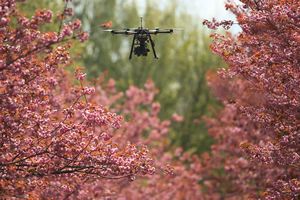Has Europe gone too far? The Delicate Dance of Regulation and Innovation
Though Europe is perceived as lagging behind in areas like cloud computing, infrastructure, chip manufacturing, and AI-particularly in creating large language models (LLMs)-it is not solely the regulations that account for these delays.
Real Estate Drones Are Here to Stay but Guidelines Need to Be Followed
To legally use a drone, the pilot must be 16 years of age or older and have an FAA UAV operator's certificate (per Part 107). Operating a drone can present a real and significant threat to life and property.
Robotics Predictions: The impact of IoT, collaborative robots and startups
Start-ups must consider regulatory regulations from the start of design, which rarely happens. A wonderful product doesn't sell very well if many companies will not purchase because they to not meet applicable safety regulations.
Lack of Machine Guarding Again Named to OSHA'S Top 10 Most Cited Violations List
The absence of required machine safeguarding remains a perennial member of OSHAs Top 10 Most Cited Violations, and 2017 was no exception. It was named number eight on the list with a total of 1,933 violations.
How increasing regulation will unleash drone-based potential
Guy Cherni, Opinion Contributor for The Hill: Surprising though it may seem, the key for increasing drone-based value can only come through increased restriction and regulation of the industry.
Americans no longer have to register non-commercial drones with the FAA
April Glaser for Recode: The court ruled that the FAAs drone registration rules, which have been in place since 2015, were in violation of a law passed by Congress in 2012.
Rules of the (Driverless) Road: How Federal Guidelines Will Impact Innovation
Although some experts fear that rules and regulations might limit innovation, most see this step by the Federal government as a clear sign of validation for the imminent future of automated automotive transportation.
Records 1 to 7 of 7
Featured Product

DESTACO - Revolutionizing Industrial Automation
Looking for a reliable solution to enhance your automation process? Look no further than the DESTACO Robohand Grippers. These grippers are designed for the modern world of robotics, offering unparalleled performance and precision. Whether you need to grip fragile items, irregularly shaped objects, or heavy-duty components, the DESTACO Robohand Grippers have got you covered. Their modular design allows for quick and easy customization, ensuring a perfect fit for your application.
Robotics and Automation - Featured Company

KNF Neuberger, Inc.
We are KNF. Founded in 1946 in Freiburg im Breisgau, Germany, we are a family-owned manufacturer that has established itself as a global solution provider specializing in the development, design, production and distribution of diaphragm pumps for the transfer of gases and liquids or for vacuum generation. With 24 locations and over 900 employees worldwide, we continue to expand our industry expertise and broad range of applications, including medical technology, inkjet, gas analysis and laboratory.






